Eva Gordon's Blog, page 13
October 6, 2013
A Muse's Guide to Care and Feeding of An Author Excerpt 3
A Muse's Guide to Care and Feeding of An Author
Scheduled Writing Time
Your author must develop good writing habits and that means sitting down and writing! He/she may spend ten minutes a day or write non-stop for two weeks streets with short cat naps. Every author will be different. Author Eva Gordon likes to keep a goal of writing 10,000 words/week during the rough draft stage. About 2000 words/day. The editing stage slows her down and she is tied to her computer fine tuning and polishing, sometimes as slow as a chapter a day. Imagine being chained until the last sentence of a 100,000 word novel is completed. Eva's two muses are the ravens, Hugin and Munin. Her muses are relentless and as soon as she is done with one story characters from her next story come knocking.
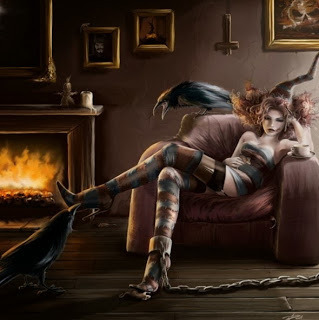 Once a manuscript is completed she celebrates with wine and chocolate. The chains are removed and she frolicks in the forest, but not for too long.
Once a manuscript is completed she celebrates with wine and chocolate. The chains are removed and she frolicks in the forest, but not for too long.

Every author will have unique habits. For example, as soon as the computer goes on, Eva finds the spotify playlist for her background music, then she reads e-mails, marks to be read for the afternoon when she is too bleary eyed to work. That explains all the typos in her e-mails. Hot coffee is made for day and she leaps into her imaginary world.
I found this interesting article on some weird habits of some famous writers. Made me smile. thebarking.com/ On weird-writing-habits-of-9-famous authors
What are your weird author habits?
Scheduled Writing Time

Your author must develop good writing habits and that means sitting down and writing! He/she may spend ten minutes a day or write non-stop for two weeks streets with short cat naps. Every author will be different. Author Eva Gordon likes to keep a goal of writing 10,000 words/week during the rough draft stage. About 2000 words/day. The editing stage slows her down and she is tied to her computer fine tuning and polishing, sometimes as slow as a chapter a day. Imagine being chained until the last sentence of a 100,000 word novel is completed. Eva's two muses are the ravens, Hugin and Munin. Her muses are relentless and as soon as she is done with one story characters from her next story come knocking.
 Once a manuscript is completed she celebrates with wine and chocolate. The chains are removed and she frolicks in the forest, but not for too long.
Once a manuscript is completed she celebrates with wine and chocolate. The chains are removed and she frolicks in the forest, but not for too long.

Every author will have unique habits. For example, as soon as the computer goes on, Eva finds the spotify playlist for her background music, then she reads e-mails, marks to be read for the afternoon when she is too bleary eyed to work. That explains all the typos in her e-mails. Hot coffee is made for day and she leaps into her imaginary world.
I found this interesting article on some weird habits of some famous writers. Made me smile. thebarking.com/ On weird-writing-habits-of-9-famous authors
What are your weird author habits?
Published on October 06, 2013 17:51
Blog Tour Stop for October 6, 2013 Review and Spotlight for Apocalyptic Moon
 Hi,
Hi,My werewolves are out and about and touring a blog near you. Today, Apocalyptic Moon, Book 1 of the After the Bane series had a great review on Lauriethoughts-Reviews
Come in before the zombies get you and find out the 18 tips you need to know to survive a zombie apocalypse in the world of the After the Bane Series.
Published on October 06, 2013 07:51
October 4, 2013
Travel Back in Time to Ancient Rome with Paranormal Romance Author Eva Gordon

Come join me at Author Roast and Toast. Plenty of food, gladiators, and hot baths. And learn more about Lycan Gladiator, Book 1 of the Wolf Maiden Saga
I will be popping in all day, as the guest roasted and toasted author.
Just Click Here: Author Roast and Toast
Published on October 04, 2013 05:56
October 2, 2013
A Muse's Guide to the Care and Feeding of an Author Entry 2
Entry 2 (Next Entry: Oct. 6)
Providing Writing Equipment For Your Author
 Your author will need a desk to write on, pen and ink, plenty of paper, oh, wait. No, your author still needs a desk but with a type writer.
Your author will need a desk to write on, pen and ink, plenty of paper, oh, wait. No, your author still needs a desk but with a type writer.
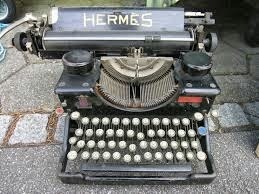
Okay, just kidding. Although there are rare authors who still write on a pad of paper or even type, today's author needs a computer. Life is so much easier for writers today with computers and research searches at their fingertips. You will need to provide internet service for your author.
 Think of all the trees authors have saved by not using paper to work on their manuscripts.
Think of all the trees authors have saved by not using paper to work on their manuscripts. 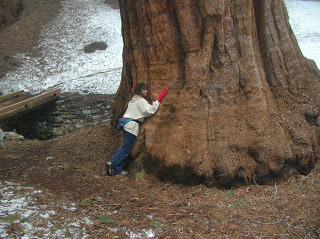
Above is Eva hugging a tree that might have been cut down if she had done her re-edits on paper.
Other tools, you may provide are index cards, journals, e-readers, dry erase board, (Eva brainstorms her scenes on dry-erase boards). Some authors love to keep a collection of research books, however this depends on type of genre and the amount of research available on the internet.
A paranormal writer's dream workplace (Just need to add the Apple Computer)
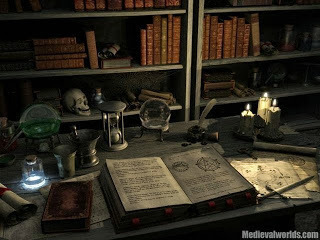
Published on October 02, 2013 15:14
October 1, 2013
More on Muse's Guide Entry 2 on Wednesday. Today I wanted to share another 5 star Review for Lycan Gladiator.
Published on October 01, 2013 17:47
September 30, 2013
A Muse's Guide to the Care and Feeding of an Author (Entry 1 : The Setting)
A Muse's Guide to the Care and Feeding of an Author
Entry 1 : The Setting
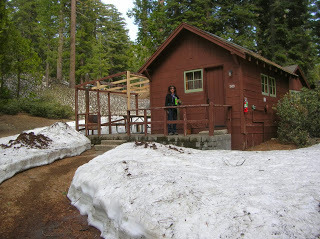
Before you choose an author you must provide him and her with an ideal setting to encourage the creative juices. Above is an example of author Eva Gordon's ideal setting. A cabin in the Sequoia National Forest at the end of winter. Due to circumstances, Eva's normal writing den is in her home but if she had her way, she would be writing her fantasy novels in some cabin or English cottage. Maybe in a beach bungalow in Bali. Honestly, you need to make sure your author does not get too distracted. Also consider your author's financial means. Muses often love the challenge of a poor author.
A writing retreat can be as simple as her home, park bench, the local Starbucks, silent library or noisy pub.Check these awesome writer retreats: Famous Writer's Retreats on Huffingtonpost.co.uk/2012/06/11/
Which one would you choose for your author?
The next entry will be on the proper writing desk and tools you need to provide for your author.
Love to hear from authors and readings about their perfect writing or reading retreat.
Entry 1 : The Setting

Before you choose an author you must provide him and her with an ideal setting to encourage the creative juices. Above is an example of author Eva Gordon's ideal setting. A cabin in the Sequoia National Forest at the end of winter. Due to circumstances, Eva's normal writing den is in her home but if she had her way, she would be writing her fantasy novels in some cabin or English cottage. Maybe in a beach bungalow in Bali. Honestly, you need to make sure your author does not get too distracted. Also consider your author's financial means. Muses often love the challenge of a poor author.
A writing retreat can be as simple as her home, park bench, the local Starbucks, silent library or noisy pub.Check these awesome writer retreats: Famous Writer's Retreats on Huffingtonpost.co.uk/2012/06/11/
Which one would you choose for your author?
The next entry will be on the proper writing desk and tools you need to provide for your author.
Love to hear from authors and readings about their perfect writing or reading retreat.
Published on September 30, 2013 15:13
September 29, 2013
A Muse's Guide to the Care and Feeding of an Author
Hi,
I'm going to be doing a short blog series, in between blog tours and finishing yet another book. I call it, A Muse's Guide to the Care and Feeding of an Author. I thought about calling it A Guide to the Husbandry of an Author but it made me feel like a 4-H project. Actually it still kind of does but I don't mind getting ribbons.
A Muse's Guide to the Care and Feeding of an Author
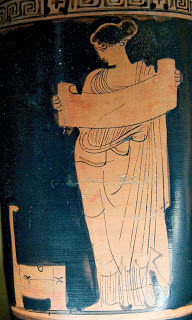
Introduction
Congratulations, you have decided to acquire an author.
First of all, this is a HUGE responsibility. You are going to have to take care of your author, day and night, 24/7. 365 days/year. Duration can be anywhere from 1 year or less to 30 plus years. So be prepared. Some authors write for even longer. If you are having second thoughts, get a pet, maybe a dog, cat or parrot.
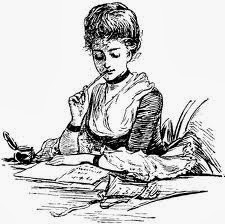
You then must decide between a male and a female writer. Each sex of the species my have different needs and interests. Careers, children, and other factors may or may not interfere with his or her writing.
Then choose a non-fiction or fiction author. Again that depends on your tastes and likes. We will focus on fiction writing since this requires the muse to provide more effort in the area of creativity. From there you can choose the genre. Your author may even jump from one genre to another or even do something called genre bending. What ever path your author chooses, you will be there to offer him or her your full support.
Now it's your turn to travel the realms in search of an author. Good luck.
I'm going to be doing a short blog series, in between blog tours and finishing yet another book. I call it, A Muse's Guide to the Care and Feeding of an Author. I thought about calling it A Guide to the Husbandry of an Author but it made me feel like a 4-H project. Actually it still kind of does but I don't mind getting ribbons.
A Muse's Guide to the Care and Feeding of an Author

Introduction
Congratulations, you have decided to acquire an author.
First of all, this is a HUGE responsibility. You are going to have to take care of your author, day and night, 24/7. 365 days/year. Duration can be anywhere from 1 year or less to 30 plus years. So be prepared. Some authors write for even longer. If you are having second thoughts, get a pet, maybe a dog, cat or parrot.

You then must decide between a male and a female writer. Each sex of the species my have different needs and interests. Careers, children, and other factors may or may not interfere with his or her writing.
Then choose a non-fiction or fiction author. Again that depends on your tastes and likes. We will focus on fiction writing since this requires the muse to provide more effort in the area of creativity. From there you can choose the genre. Your author may even jump from one genre to another or even do something called genre bending. What ever path your author chooses, you will be there to offer him or her your full support.
Now it's your turn to travel the realms in search of an author. Good luck.
Published on September 29, 2013 15:42
September 25, 2013
Lycan Gladiator spotlight and excerpt on Snarkology Blog
Learn more about Lycan Gladiator, Book 1 in the Wolf Maiden Saga on today's spotlight and excerpt on The Snarkology Blog

Published on September 25, 2013 11:46
September 19, 2013
Visit and enter Apocalyptic Moon Giveaway
http://t.co/fDJDqIwtlHLike zombies, werewolves and witches oh my? Do enter.
— evagordon Author (@evagordon) September 19, 2013
Published on September 19, 2013 09:54
September 7, 2013
Bestiary Journal: Tyto alba, The Barn Owl
Barn Owl Tyto alba
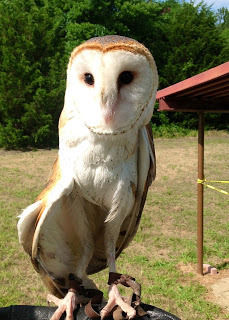 This week's bestiary journal is on the common barn owl. Above is a Barn Owl, named Willie I work with at the Black Prairie Raptor Center. He is an education bird because he was imprinted on humans and has a permanent broken wing.
This week's bestiary journal is on the common barn owl. Above is a Barn Owl, named Willie I work with at the Black Prairie Raptor Center. He is an education bird because he was imprinted on humans and has a permanent broken wing.According to my research on the barn owl, this particular bird seems to be the most wide spread of all birds, appearing in most countries on most continents, with many subspecies. It is known by many names, most of them attributed to their appearance, habitat or the way they fly so silently through the night. Some of those names are, Silver Owl, Demon Owl, Ghost Owl, Monkey-faced Owl, Hissing Owl, Golden Owl and even Hobgoblin.
The Barn Owls face has a unique shape and color which distinguishes it from other owls. It has no ear tufts, and the dark eyes and beak are encircled by a heart-shaped facial ruff of white, rimmed with tan, giving it an odd and startling appearance. The Barn Owl is one of the few bird species where the female is showier than the male, she has a more reddish chest than the male and is more spotted, as well. Apparently, the heavily spotted chest of the female is a stimulus to the male and indicates that the female is healthy, she gets fewer diseases and may even be more resistant to parasites.
The Barn Owl does not make a hooting sound, rather it produces a shree scream and it can hiss like a snake when it is trying to scare intruders. If cornered or captured it will throw itself on its back and flail with its sharp taloned feet.
The Barn Owl has excellent night-vision and acute hearing and can find its prey easily, by sound alone if necessary, finding mice hidden by vegetation or snow and in complete darkness. Its ears are placed asymmetrically and this helps to improve the detection of sound position and distance so that the owl does not need to see to hunt.
The Barn Owl eats relatively more food compared to other owls, making it one of the most economically valuable wildlife animals to farmers. Farmers find these owls more effective than poison against destructive rodents and so provide nesting sites for them.
Nocturnal,they wait until dark to start hunting. The only thing bringing them out earlier would be to feed their young. The Barn Owl is a bird of open country, and sweeps fields silently on the wing, catching its prey in its long talons, preferring small mammals like mice and gophers, but it will eat anything it can that is more than a beak-full, usually torn into chunks and eaten completely, bones and all. The Barn Owl will nest in old buildings, the hollows of old trees and even on or in the ground, although they do not build a nest, they do scrape together some debris. Anytime prey is abundant will usually cause the Barn Owls to begin nesting. A couple of owls can have four or five young in their nest at a time. The young owlets are covered with snow-white down for the first six days, but it is replaced by a buff-colored down which lasts for about fifty days. The young are hungry all the time, and they keep their parents busy finding food. After about eight weeks the young start to venture out of the nest.
If you ever come across a barn owlet leave it alone, parents are nearby. And if you come across a wounded bird call a bird rehab center or animal control. Never raise a wild bird as a pet. It is illegal and will do more harm than good.
Published on September 07, 2013 15:02




